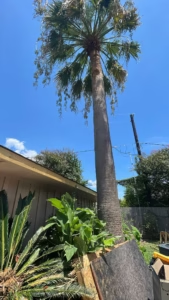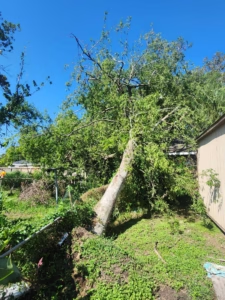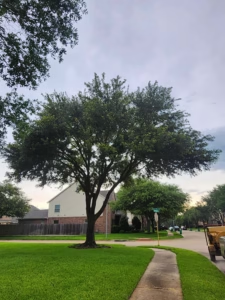Sustainable landscaping with trees is more than just a trend—it’s a necessity for creating eco-friendly spaces that benefit both the planet and property owners. By reducing carbon footprints, improving energy efficiency, and conserving water, trees are the cornerstone of sustainable landscaping. Here’s how they help create a greener environment and what you can do to maximize their benefits.
The Role of Trees in Reducing Carbon Footprints
One of the most significant environmental benefits of trees is their ability to reduce carbon footprints. Trees act as natural air purifiers, absorbing carbon dioxide (CO₂) from the atmosphere and releasing oxygen through photosynthesis.
Carbon Sequestration
Trees absorb carbon dioxide (CO₂) during photosynthesis, storing it as biomass in their trunks, branches, and roots. A single mature tree can absorb up to 48 pounds of CO₂ annually, effectively reducing greenhouse gases in the atmosphere.Improved Air Quality
By filtering pollutants like nitrogen oxides, ammonia, and sulfur dioxide, trees clean the air and make urban areas more livable. In fact, tree-lined streets can reduce air pollution by up to 25%.Urban Heat Island Mitigation
Trees lower urban temperatures by providing shade and releasing moisture into the air. Cooler cities mean less reliance on energy-intensive cooling systems, thereby cutting down emissions from electricity consumption.
Pro Tip: Plant native tree species like live oaks or red maples in your area for maximum carbon-sequestration benefits.
Energy Efficiency Through Trees
Strategically planted trees can significantly reduce energy consumption, making properties more energy-efficient.
Natural Cooling:
- Trees planted on the west or south side of a building can provide shade, reducing indoor temperatures by up to 8–10°F during summer.
- This translates to a 20–25% reduction in cooling costs.
Windbreaks:
- Evergreen trees serve as windbreaks in winter, lowering heating costs by blocking cold winds.
- Properties surrounded by windbreaks can save up to 15% on heating bills.
Solar Optimization:
- Deciduous trees provide shade in summer and allow sunlight to pass through during winter when they lose their leaves, optimizing year-round energy use.
Actionable Tip: Consult an arborist to determine the best placement of trees for maximum energy efficiency on your property.
Water Conservation with Trees
Trees play a vital role in water management and conservation. From preventing water runoff to maintaining soil health, they ensure sustainable landscaping practices.
- Reduced Runoff: Tree roots absorb excess rainwater, reducing runoff and preventing erosion.
- Improved Soil Health: Decaying leaves and organic matter from trees enrich the soil, improving its ability to retain water.
- Shading Lawn Areas: Trees shade surrounding plants and soil, reducing evaporation rates and decreasing the need for excessive irrigation.
Fun Fact: A mature tree can intercept over 1,000 gallons of rainwater annually, helping prevent flooding and conserving water resources.
Water-Saving Tip: Incorporate drought-tolerant trees and mulching techniques to further enhance water efficiency in your landscaping.
Eco-Friendly Practices for Sustainable Landscaping with Trees
To maximize the environmental benefits of trees, consider the following sustainable landscaping practices:
Plant Native Species
Native trees are better adapted to local climates and require less water and maintenance. In Houston, species like live oaks, bald cypress, and pecan trees thrive naturally.Use Mulching
Mulching around tree bases conserves soil moisture, regulates temperature, and prevents weed growth. Use organic materials like wood chips or bark for best results.Adopt Drip Irrigation
Drip irrigation systems deliver water directly to the tree roots, minimizing waste and promoting healthy growth.Maintain Healthy Trees
Regular pruning, pest control, and soil enrichment ensure trees stay healthy and continue providing environmental benefits. Work with certified arborists for expert care.
The Long-Term Benefits of Sustainable Landscaping with Trees
Sustainable landscaping with trees offers long-term advantages that extend beyond individual properties:
- Economic Savings: Reduced energy and water costs.
- Biodiversity: Trees create habitats for birds, insects, and wildlife.
- Enhanced Property Value: Landscaped properties with mature trees are valued higher in the real estate market.
- Climate Resilience: Tree-covered areas are better equipped to withstand extreme weather events.
By investing in sustainable landscaping practices, you not only enhance your property but also contribute to a healthier and more sustainable planet.
Transform your property into an eco-friendly haven with sustainable landscaping! Contact HamodaTrees today for professional tree care services and expert advice on energy-efficient and water-conserving landscaping practices. Let’s build a greener future together!



